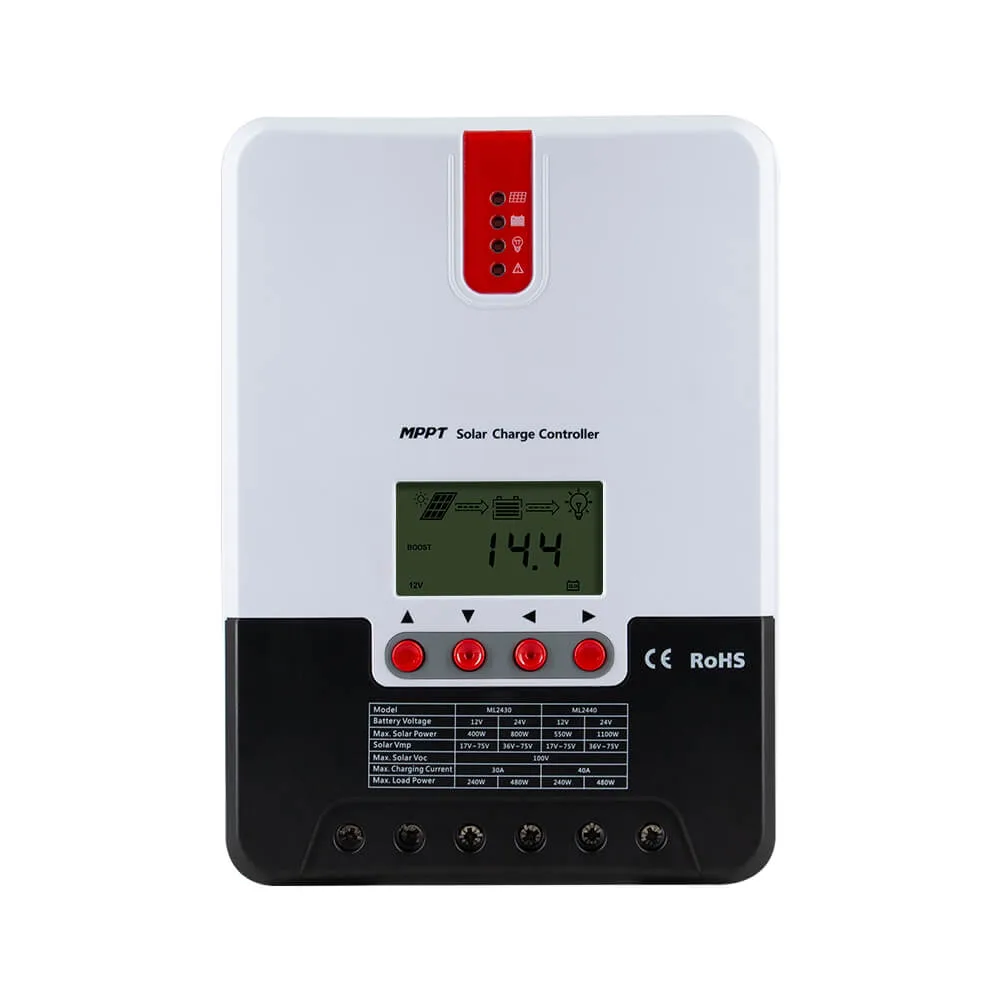
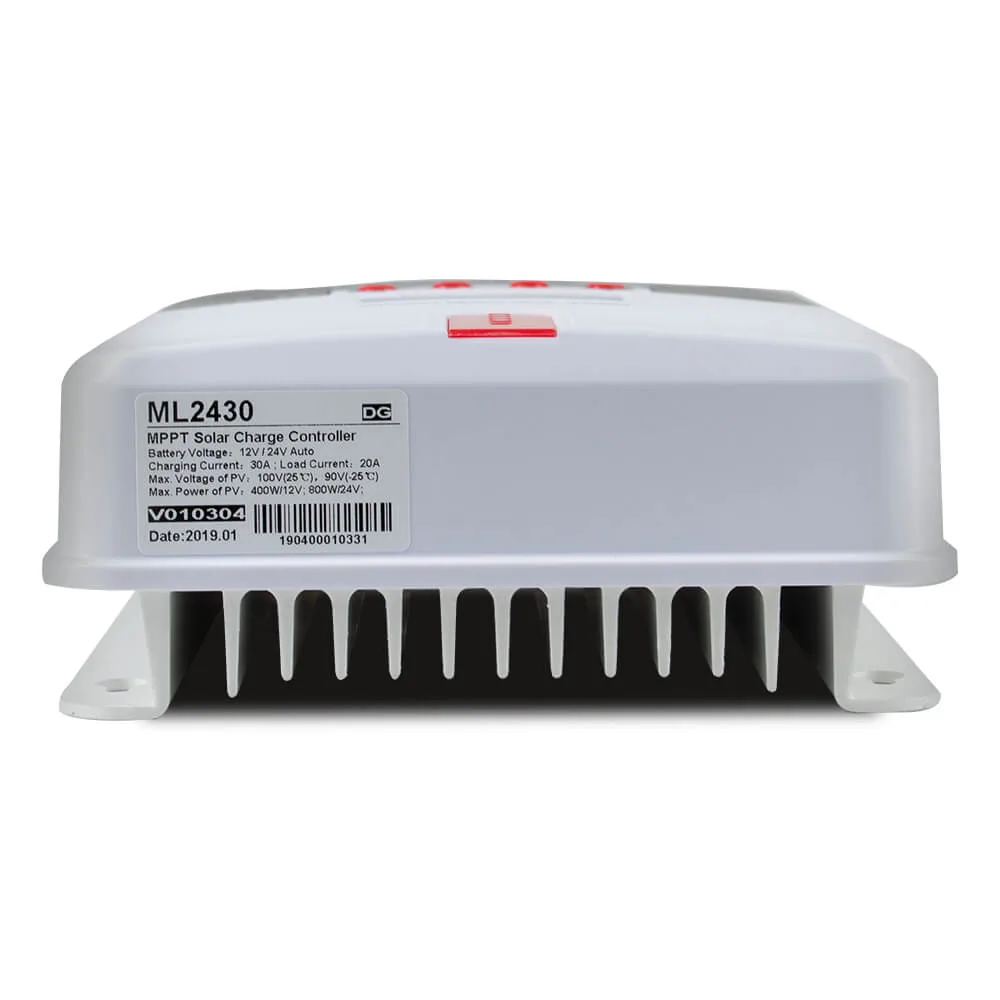
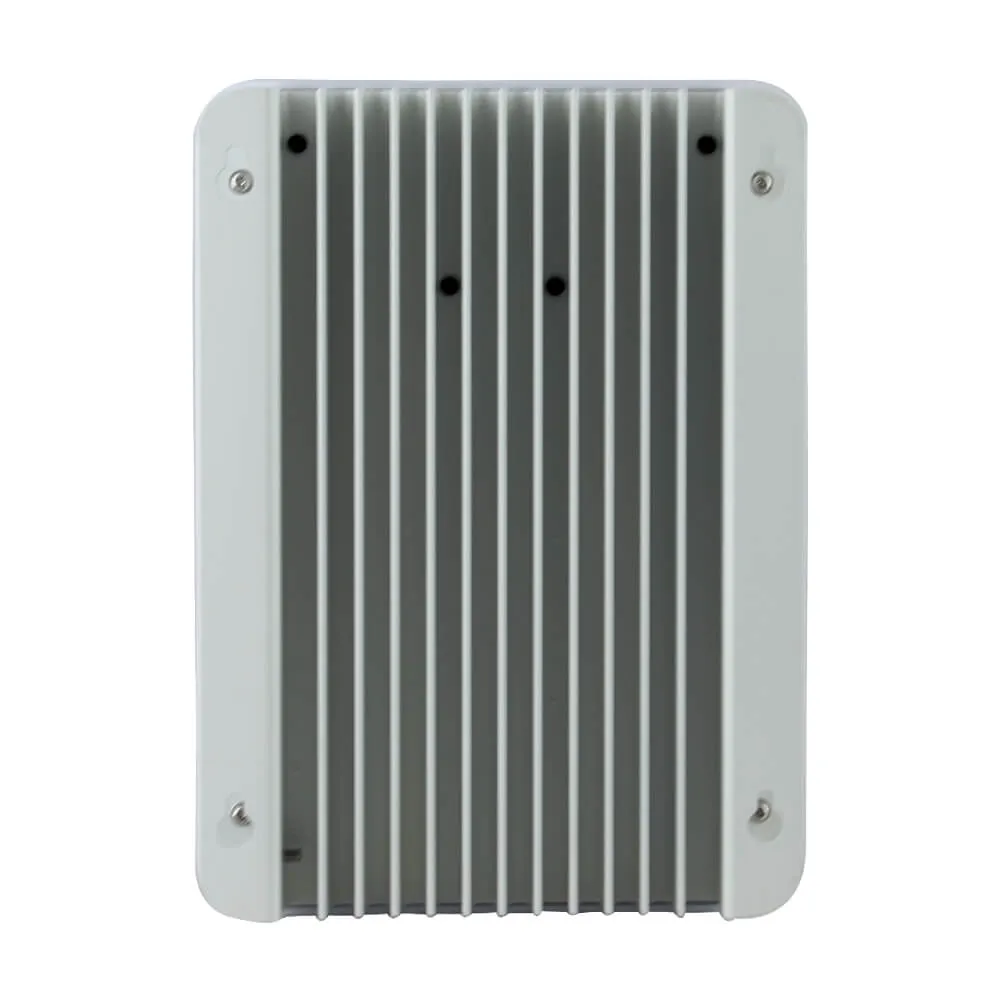
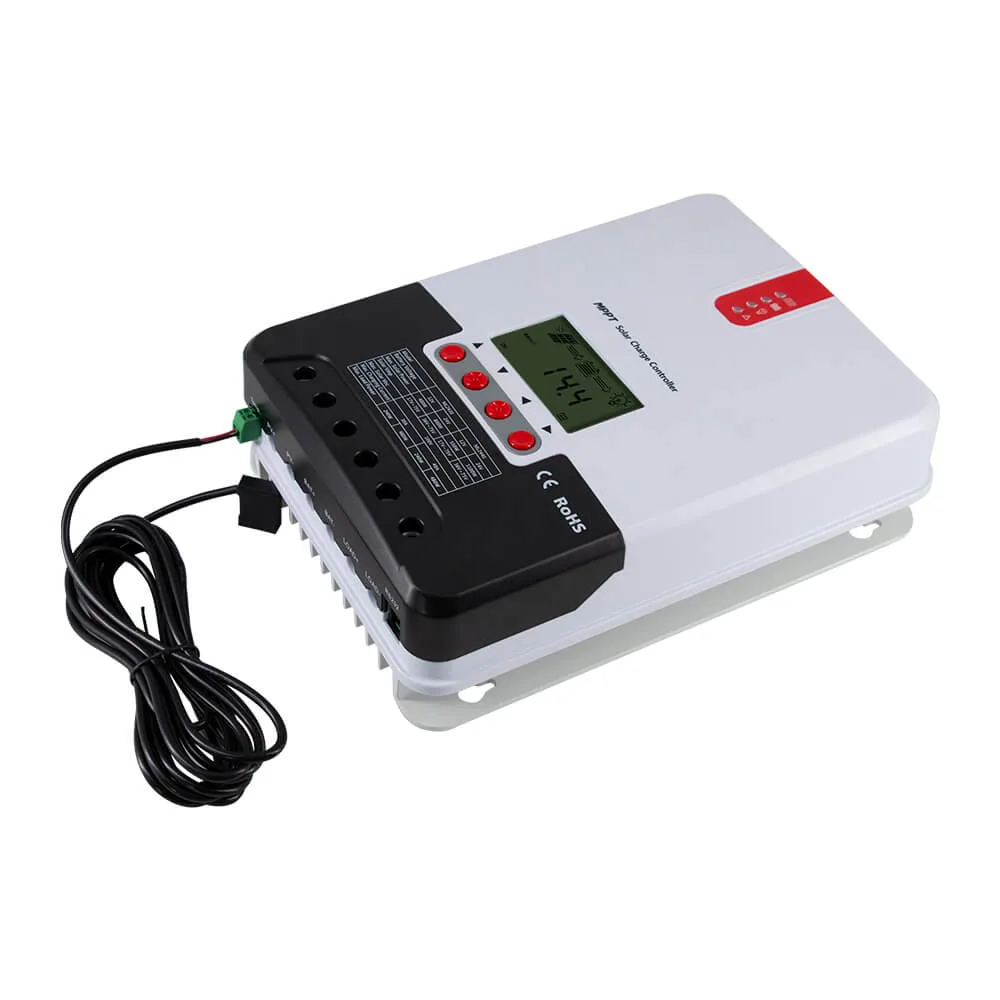
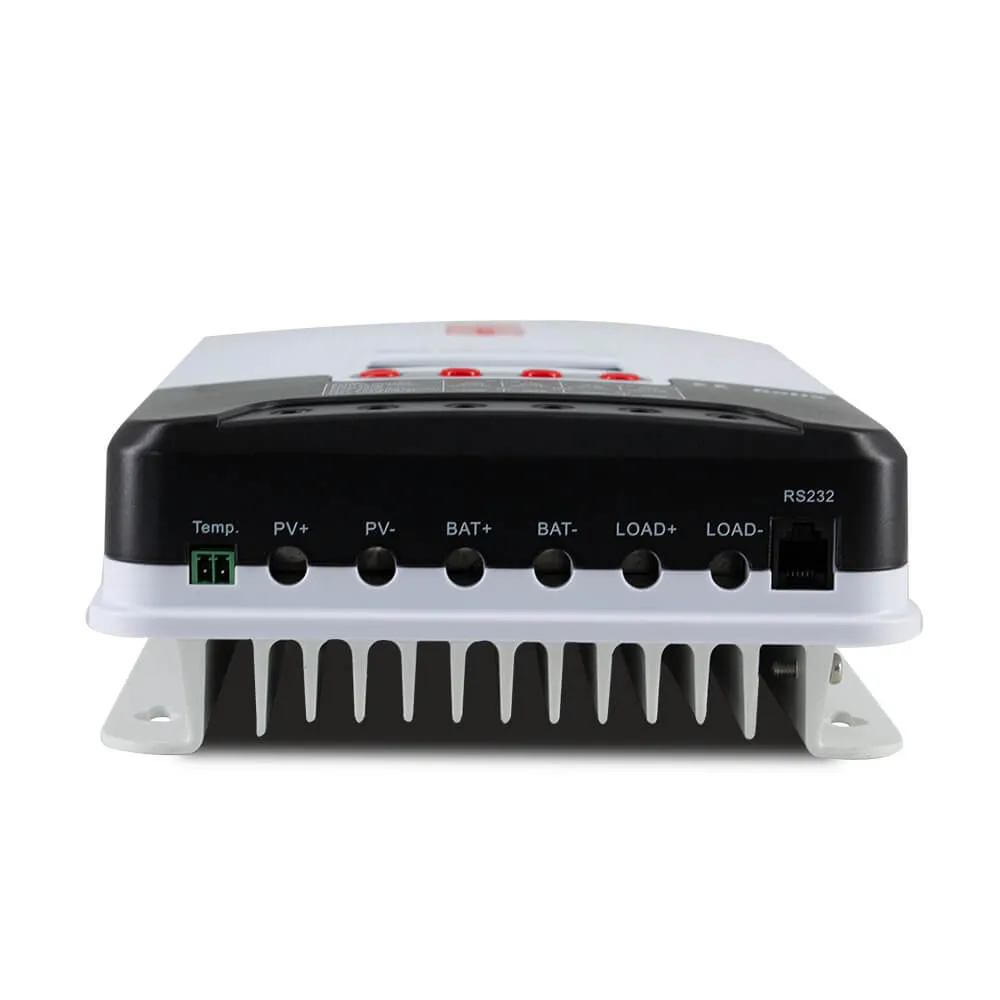
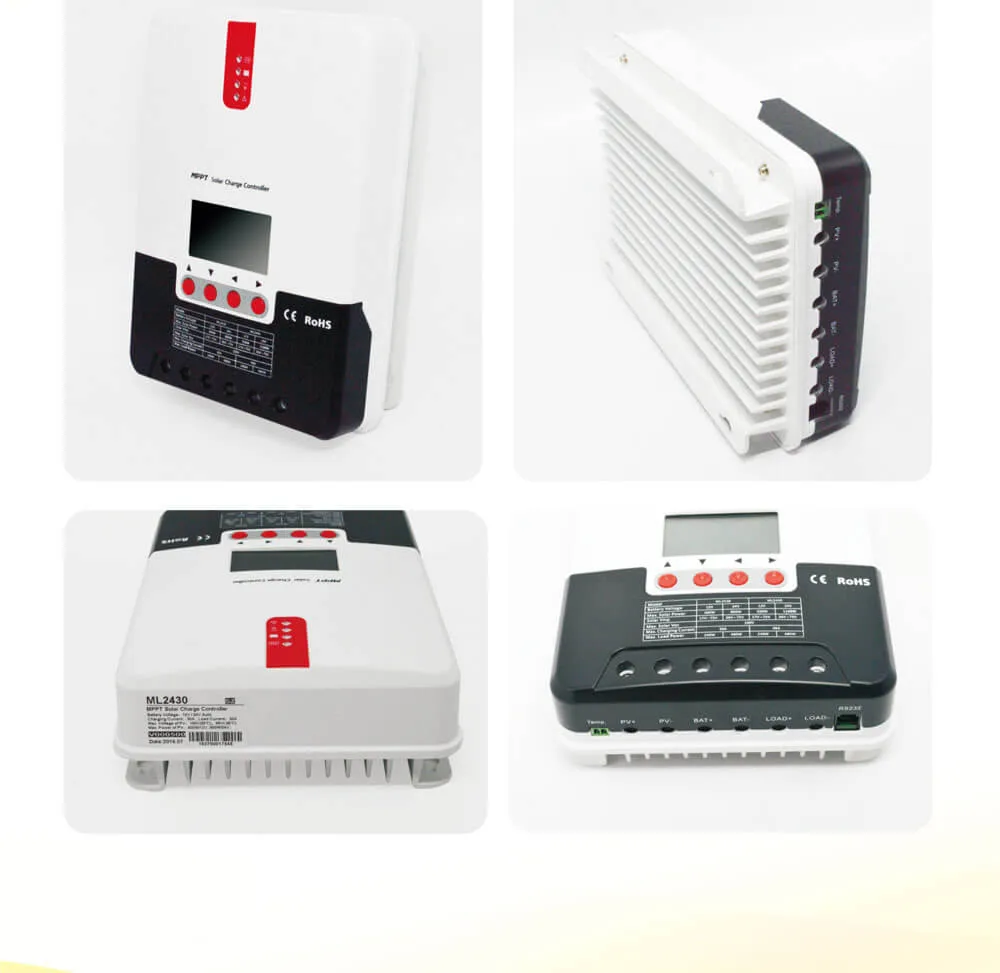

This product can keep monitoring the solar panel's generating power and tracking the highest voltage and current values (VI) in real time, enabling the system to charge the battery in maximum power. It's designed to be used in off-grid solar photovoltaic systems to coordinate operation of the solar panel, battery and load, functioning as the core control unit in off-grid photovoltaic systems.
|
Current Optional:
|
|



FEATURE:
With the advanced dual-peak or multi-peak tracking technology, when the solar panel is shadowed or part of the panel fails
resulting inmultiple peaks on the I-V curve, the controller is still able to accurately track the maximum power point.
A built-in maximum power point tracking algorithm can significantly improve the energy utilization efficiency of
photovoltaicsystems,and raise the charging efficiency by 15% to 20% compared with the conventional PWM method.
A combination of multiple tracking algorithms enables accurate tracking of the optimum working point on the I-V curve in anextremelyshort time.The product boasts an optimum MPPT tracking efficiency of up to 99.9%.
Advanced digital power supply technologies raise the circuit's energy conversion efficiency to as high as 98%.
Charging program options are available for different types of batteries including gel batteries, sealed batteries,
open batteries, lithiumbatteries, etc.The controller features a limited current charging mode.
When the solar panel power exceeds a certain level and the chargingcurrent islarger than the rated current, the
controller will automatically lower the charging power and bring the charging currentto the rated level.Instantaneous
large current startup of capacitive loads is supported.
Automatic recognition of battery voltage is supported.
LED fault indicators and an LCD screen which can display abnormality information help users to quickly identify system faults.
Historical data storage function is available, and data can be stored for up to a year.
The controller is equipped with an LCD screen with which users can not only check device operating data and statuses, but also modifycontroller parameters.
The controller supports standard Modbus protocol, fulfilling the communication needs of various occasions.
The controller employs a built-in over-temperature protection mechanism. When temperature surpasses the set value, the
chargingcurrent will decline in linear proportion to the temperature so as to curb the temperature rise of the controller,
effectively keeping thecontroller from being damaged by overheat.
Featuring a temperature compensation function, the controller can automatically adjust charging and discharging parameters in order toextend the battery's service life.
TVS lighting protection.
Introduction to Maximum Power Point Tracking Technology
Maximum Power Point Tracking (MPPT) is an advanced charging technology that
enables the solar panel to output more power by adjusting the electric module's
operating status. Due to the nonlinearity of solar arrays, there exists a maximum
energy output point (maximum power point) on their curves. Unable to
continuously lock onto this point to charge the battery, conventional controllers
(employing switching and PWM charging technologies) can't get the most of the
power from the solar panel. But a solar charge controller featuring MPPT
technology can continuously track arrays' maximum power point so as to get the
maximum amount of power to charge the battery.
Take a 12V system as an example. As the solar panel's peak voltage (Vpp) is
approximately 17V while the battery's voltage is around 12V, when charging with a
conventional charge controller, the solar panel's voltage will stay at around 12V,
failing to deliver the maximum power. However, the MPPT controller can
overcome the problem by adjusting the solar panel's input voltage and current in
real time, realizing a maximum input power.
Compared with conventional PWM controllers, the MPPT controller can make the
most of the solar panel's max. power and therefore provide larger charging current.
Generally speaking, the latter can raise the energy utilization ratio by 15% to 20%
in contrast with the former

Model | ML2420 | ML2430 | ML2440 |
System voltage | 12V/24VAuto | ||
No-load loss | 0.7 W to 1.2W | ||
Battery voltage | 9 to 35 | ||
Max. solar input voltage | 100V (25°C), 90V (-25°C) | ||
Max. power point voltage range | Battery voltage +2V to 75V | ||
Rated charging current | 20A | 30A | 40A |
Rated load current | 20A | ||
Battery wire diameter(mm2) | 5 | 6 | 10 |
Load wire diameter (mm2) | 5 | 5 | 5 |
Max. capacitive load capacity | 10000uF | ||
Max. photovoltaic system input power | 260W/ 12V | 400W/ 12V | 550W/ 12V |
520W/ 24V | 800W/ 24V | 1100W/ 24V | |
Conversion efficiency | ≤ 98% | ||
MPPT tracking efficiency | > 99% | ||
Temperature compensation factor | -3.0mv/ °C/ 2V (default) | ||
Operating temperature | -35°C to +45℃ | ||
Protection degree | IP32 | ||
Communication method | RS232 | ||
Altitude | ≤ 3000m | ||
Product dimensions | 210*151*59.5mm | 238*173*72.5 | 238*173*72.5 |